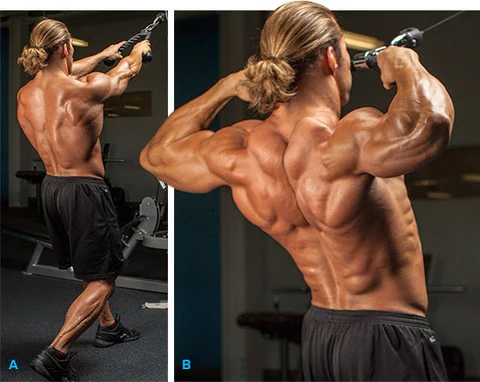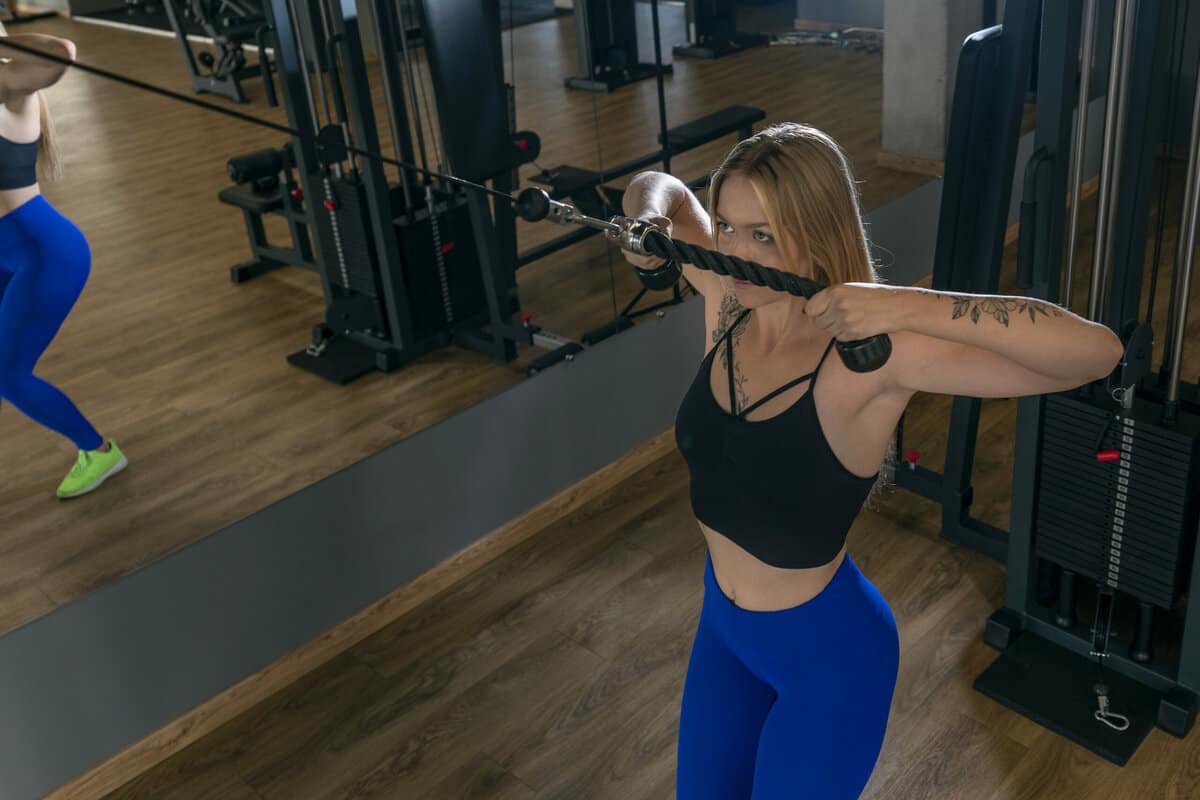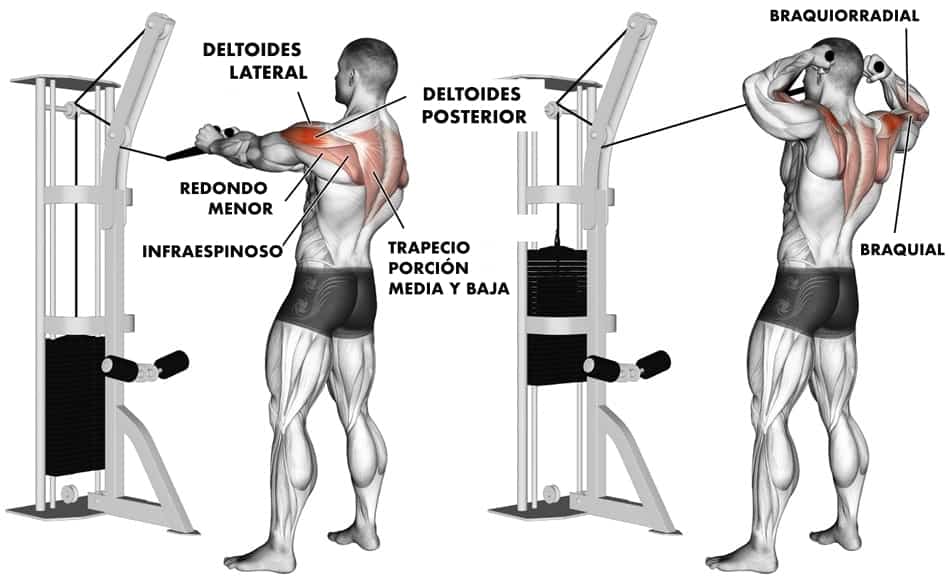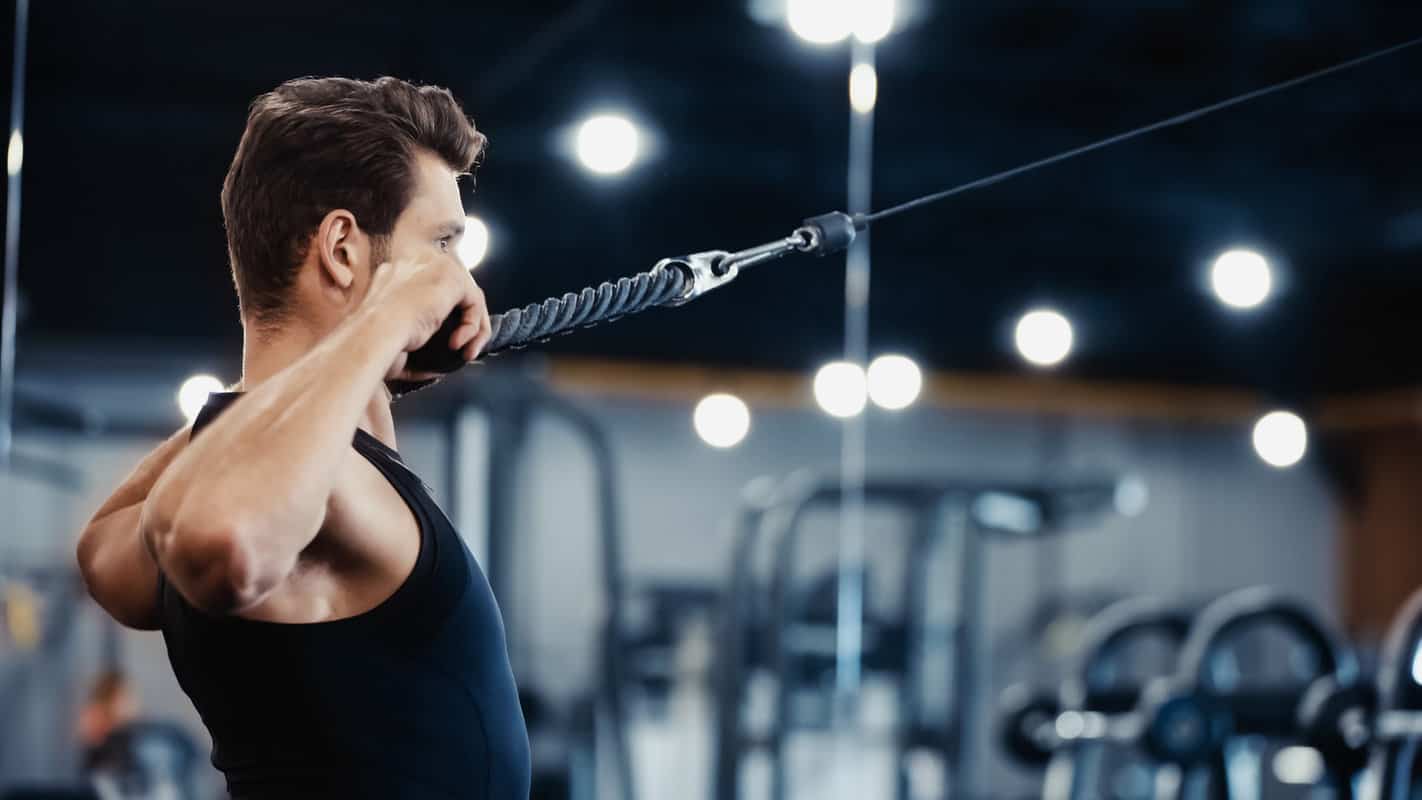One of the most overlooked exercises but that should instead be basic in our shoulder training and back, is the Face Pull.
In this article, we analyze in depth which muscles you work with this exercise and how we should perform it to avoid injuries.
What is the face pull?
The face pull is a strength training and physical conditioning exercise that focuses on the upper back, shoulders, and muscles of the back of the neck.
This exercise helps improve posture and shoulder stability, which is important for preventing injuries.
Why include the face pull in our routine?
This exercise can not only have an aesthetic function by developing the deltoids but also a function in the prevention and rehabilitation of rotator cuff injuries.
By strengthening the rotator cuff muscles, shoulder stability and mobility can be improved, which can reduce the risk of injuries. Additionally, by working the posterior portion of the deltoid, posture and the physical appearance of the shoulders can be improved.
In summary, including the face pull in training is an effective way to strengthen the muscles of the back of the shoulder and the rotator cuff, which can improve function and reduce the risk of injuries.
What muscles are worked in the face pull?
The face pull is an exercise that primarily works the muscles of the upper back, shoulders, and muscles of the back of the neck. When performing this exercise, the following muscles are activated and worked:
- Posterior deltoids: these muscles are located at the back of the shoulders and are the main muscles worked during the face pull.
- Rotator cuff: this set of muscles includes the infraspinatus, supraspinatus, and teres minor, and is located in the shoulder. The face pull is one of the best exercises to strengthen the rotator cuff, which can help prevent injuries and improve shoulder stability.
- Trapezius: this muscle extends from the base of the skull to the top of the spine and extends to the shoulders. The face pull especially works the upper portion of the trapezius, which is important for maintaining good posture and a healthy shoulder position.
- Rhomboids: these muscles are located between the shoulder blades and are important for maintaining good posture and shoulder stability.
How to do the face pull exercise?
The face pull is a strength training exercise that focuses on the muscles of the upper back, shoulders, and muscles of the back of the neck. Below, I will detail how to perform this exercise:
- Find a cable station or a pull-up bar that has a high attachment point. Make sure the height is adjusted so you can comfortably grab the bar or rope.
- Grab the rope or bar with both hands, with palms facing down and fingers interlocked.
- Stand with your feet shoulder-width apart, with knees slightly bent and back straight.
- Extend your arms forward and upward, keeping your elbows in line with your shoulders. Keep the rope or bar under tension throughout the exercise.
- Pull the rope or bar towards your face, bringing your elbows back and up. Keep your elbows in line with your shoulders throughout the movement.
- Stop when the rope or bar is close to your face, ensuring that your elbows are slightly above shoulder height.
- Hold the position for a second or two, ensuring that you are tensing the muscles of the upper back and shoulders.
- Return to the starting position, extending your arms forward and upward.
- Repeat the movement to complete several repetitions.
It is also important to vary the resistance of the band or the weight used in the exercise to increase or decrease the intensity of the exercise.
Remember that this is an excellent strength training exercise to improve posture and shoulder stability, prevent injuries, and develop the muscles of the upper back and shoulders.

Common mistakes in the face pull
Despite being an effective and safe training exercise, the face pull can be poorly executed if attention is not paid to proper technique. Below are some common mistakes in the face pull that you should avoid to maximize the benefits of the exercise and prevent injuries:
- Arching the back: it is important to keep the back straight throughout the exercise to avoid injuries and ensure that the correct muscles are being worked.
- Pulling too hard on the rope or bar: it is easy to get carried away and pull too hard on the rope or bar. It is important to remember that the face pull is about controlling the tension in the rope or bar, not pulling it with too much force.
- Not keeping the elbows in line with the shoulders: when pulling the rope or bar, make sure to keep the elbows in line with the shoulders to work the correct muscles and avoid injuries.
- Not holding the final position: it is important to hold the final position for a second or two to ensure that the muscles are contracting properly and getting the maximum benefit from the exercise.
- Not varying the resistance: to get the best results from the face pull, it is important to vary the resistance of the band or the weight used in the exercise to increase or decrease the intensity.
- Do not seek maximum speed in execution: This can be considered an exception since in any other exercise we would recommend the opposite, that is, perform the concentric phase at maximum intentional speed and the eccentric phase in a controlled manner.
The hidden treasure of the benefits of the face pull
It is not an exaggeration to say that the face pull is a transformative exercise. Let’s see how this exercise can become your new ally in the gym.
Upper body strengthening
The face pull is a true champion when it comes to working the upper body. This exercise focuses on the muscles of the back, shoulders, and arms.
“The face pull is like a fitness superhero, saving your shoulders and back from weakness.“
Improves posture
The face pull is not just an exercise to develop strength, it is also fantastic for improving posture. By strengthening the back muscles, it helps combat slouching and promotes an upright posture.
Prevents injuries
The face pull is an ally in injury prevention, especially if you spend a lot of time sitting or if you perform other high-intensity exercises. It works the muscles that are often ignored in other exercises, thus balancing your muscle strength.
“Remember, the face pull is like your personal bodyguard in the gym, protecting you from injuries.“
Face pull: your companion on the fitness journey
The face pull may seem like a simple exercise at first glance, but don’t be fooled. It has a big impact!
The power of the face pull
If you are looking for an exercise that improves your posture, strengthens your upper body, and protects you from injuries, the face pull is for you. Ready to give it a try?
“The face pull is not just an exercise, it is a path to a better version of yourself.“
Conclusion
There are different options for performing the face pull exercise, including using a high pulley while standing, a low pulley while seated, resistance bands, or even TRX with body weight. There are also different grip options, such as supine, neutral, or prone, and you should choose the one that is most comfortable for the individual.
Generally, a prone grip and a pulley are used to perform the exercise. If performed standing, it is important to lean slightly backward, while if performed seated and on a low pulley, it is necessary to move far enough from the pulley to feel the weight and prevent the plates from colliding when stretching the arms in each repetition.
The movement begins with the arms extended, elbows close to the torso, and the spine upright. From this position, the pulley is brought towards the neck or face, combining a horizontal shoulder extension, abduction, and external rotation. The final position is similar to the double biceps pose used by bodybuilders to show their biceps.
Bibliographic references
- Boyle M. (2012). Advances in Functional Training: Training Techniques for Coaches, Personal Trainers and Athletes.
- Cook G., Burton W., Kiesel K., Rose G., Bryant M.F.(2012). Movement: Functional Movement Systems – Screening, Assessing, Corrective Strategies On Target Publications. The Journal of the Canadian Chiropractic Association. (link)
- Janda, V., & Jull, G. (1996). Muscles and motor control in low back pain. Barcelona: Paidotribo. (link)
- Kendall, F. P., et al (2007). Kendall’s Muscles Testing and Function with Posture and Pain. Madrid: Marban Libros.
- Borghuis, J., et al (2008). The Importance of Sensory-Motor Control in Providing Core Stability. Implications for Measurement and Training. Sports Medicine, Auckland, N. Z. 38(11), 893-916.
- Willardson, J. M., et al (2007). Core stability training: applications to sports conditioning programs. Journal of Strength and Conditioning Research, 21, 979-985.(link)



